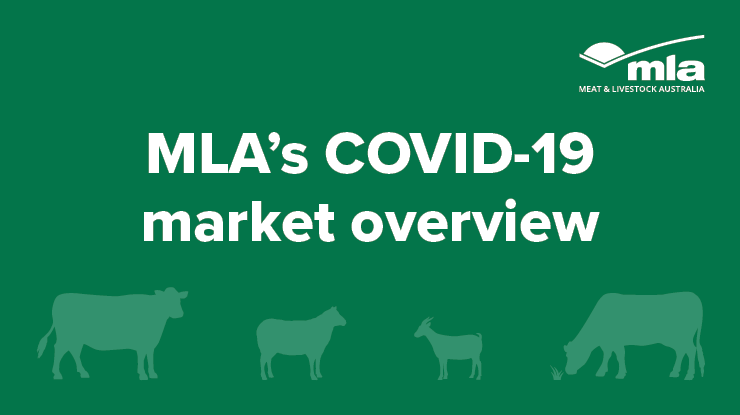
The unprecedented and unpredictable nature of COVID-19 makes it very difficult to report on the complete range of impacts to Australian red meat and livestock industry in an accurate and timely manner. It is clear that even though China appears to be emerging from COVID-19 shutdown, the crisis is escalating across the rest of the world and will continue to disrupt consumption of Australian red meat domestically and around the globe.
Here's a summary of some consistent impacts seen in global markets:
Red meat supply and logistics (processing, sea freight and air freight)
Major disruptions, including flight cancellations restricting air-freight capacity, refrigerated containers being held at ports and not returned to global circulation, labour shortages and slow customs clearance. The Australian Government has launched the International Freight Assistance Mechanism to re-establish air freight to high-end protein markets.
Shifting consumer needs
MLA recently commissioned some consumer research in China which highlights that consumers in a crisis gravitate to brands they trust. Australian beef and lamb have gained that trust in many markets over decades of combined industry efforts.
Foodservice sales
There has been a significant drop in sales at foodservice, the extent depends on restrictions imposed by countries. Typically, higher value loin cuts make their way into foodservice, balancing out the overall value of the carcase for Australian processors. With loin sales down, it will remain a constant challenge for processors to move the entire carcase while minimising the impact to overall value of the carcase.
Retail sales
As foodservice channels slow, demand for meat through retail, particularly online, has lifted significantly, especially for staple items like mince.
Demand for livestock exports
Demand for livestock is increasing due to the reduction in air transit limiting access to chilled/frozen meat.
Australian red meat exports
Australian red meat exports were relatively steady in March 2020. Beef exports sat just shy of 94,000 tonnes swt, up 1% on February, with dropping slaughter only partially flowing through to export volumes. Lamb exports lifted 5% on February to hit 25,000 tonnes swt, while mutton exports backed off by 9%, reaching just 13,400 tonnes swt.
Australian livestock markets
Online livestock sales have risen, saleyards have adjusted to video streaming sales and implemented strict entry protocolS to conform with social distancing requirements.
The National Livestock Reporting Service also adjusted market reporting services to support COVID-19 containment efforts. A series of CV-19 indicators have been devised to keep stakeholders best informed in the current environment. Read the latest market news here.
Impacts on MLA's marketing activities
MLA's marketing operations have been curtailed in all markets, particularly Asia, due to the advice against gatherings of people and the disruption to major channels, such as foodservice.
Despite the global disruptions caused by COVID-19, MLA is committed to delivering marketing communications via digital platforms – see how MLA's Simply Spring campaign in the US has been modified to leverage digital platforms. Once the COVID-19 crisis begins to clear, MLA will immediately look to activate marketing programs.
MLA is working closely with the Australian Olympic Committee and Paralympics Australia regarding the Australian Beef partnerships to align them with the new Games period. MLA intends to retain its Olympian and Paralympian Australian Beef Ambassadors and will continue to use these Ambassadors across 2020 and 2021 activities.






